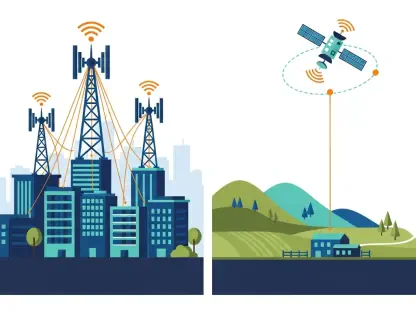Setting the Stage for Telecom Evolution
In the fast-paced world of telecommunications, over 60% of service providers still grapple with legacy unified communications (UC) systems that hinder their ability to meet modern business demands, underscoring a critical challenge in the industry. This staggering statistic highlights the urgent need for modernization amid rising customer expectations and rapid technological advancements. As outdated platforms like BroadSoft and traditional PBX systems from Mitel and Avaya reach end-of-life, the market faces a pivotal moment of transformation.
This analysis delves into the implications of Intermedia’s expanded Service Provider Migration Program, a solution designed to bridge the gap between obsolete infrastructure and cutting-edge, AI-powered communication tools. By examining current market trends, data, and projections, the focus shifts to how this initiative reshapes the competitive landscape for service providers. The importance of this shift cannot be overstated, as staying relevant hinges on the ability to adopt scalable, efficient systems without prohibitive costs or disruptions.
The exploration ahead aims to unpack the strategic value of AI-driven migration, offering insights into how service providers can leverage such programs to retain customers and drive growth. With the telecom sector at a crossroads, understanding these dynamics provides a roadmap for navigating the complexities of modernization in a highly competitive environment.
Deep Dive into Market Trends and Projections
Legacy Systems: A Persistent Barrier to Progress
The telecommunications market remains heavily burdened by legacy UC and PBX systems, which, despite their historical reliability, now pose significant operational risks. Data indicates that a substantial portion of service providers—estimated at nearly half—still rely on platforms with declining functionality and minimal vendor support. This dependency results in increased customer dissatisfaction, as businesses demand seamless integration of voice, video, and chat tools that older systems simply cannot deliver.
Market analysis reveals that the hesitation to migrate stems from high costs and the fear of service interruptions during transitions. For instance, small to mid-sized providers often lack the capital to overhaul their infrastructure, while larger entities dread the potential loss of clientele during complex migrations. However, with customer churn rates rising due to outdated offerings, the cost of inaction is becoming far greater than the investment required for change.
Looking ahead, projections suggest that over the next two years, from 2025 to 2027, the adoption of migration programs will surge as end-of-life announcements for legacy systems accelerate. This trend highlights a growing recognition within the industry that clinging to obsolete technology is no longer viable. Solutions that minimize financial and logistical hurdles are poised to dominate, setting the stage for widespread modernization.
AI Integration: The New Competitive Edge
A defining trend in the telecom sector is the rapid integration of artificial intelligence into communication platforms, a shift that Intermedia capitalizes on with its migration program. AI-driven tools offer automation of routine tasks, enhanced data analytics, and improved user experiences, positioning them as indispensable for meeting the needs of today’s dynamic business environments. Market data shows that providers offering AI-enhanced solutions report up to a 20% increase in customer satisfaction compared to those stuck with traditional setups.
The demand for such technology is fueled by broader industry shifts, including the rise of remote work and the need for unified communication systems that support hybrid operations. Unlike legacy platforms, which lack scalability and flexibility, AI-powered systems provide a robust framework for growth, enabling service providers to upsell advanced features and services. This capability is critical in a market where differentiation is increasingly tied to innovation rather than price alone.
Future forecasts indicate that AI adoption in telecom will continue to accelerate, with investment in these technologies expected to grow significantly by 2027. While challenges like initial learning curves and integration complexities persist, the long-term benefits of operational efficiency and customer loyalty far outweigh these hurdles. Providers who embrace this trend early stand to gain a substantial edge over competitors slow to adapt.
Partnership Models: Redefining Market Dynamics
Another pivotal market trend is the shift toward collaborative, partner-first models, as exemplified by Intermedia’s approach to migration support. This strategy focuses on customizable branding options and cost-free migration tools, allowing service providers to maintain their unique identity while transitioning to modern platforms. Industry insights suggest that such flexibility reduces customer churn by preserving established relationships, a key concern during infrastructure upgrades.
The emphasis on partnerships also addresses regional and market-specific nuances, such as varying regulatory requirements and customer preferences for branded services. By offering ready-to-use marketing campaigns and dedicated technical assistance, programs like Intermedia’s enable providers to focus on growth rather than the logistics of migration. This model contrasts sharply with traditional, one-size-fits-all solutions that often fail to account for diverse provider needs.
Projections for the coming years point to a market increasingly defined by strategic alliances, where collaboration between technology vendors and service providers becomes a cornerstone of success. As financial barriers to migration are dismantled through innovative programs, smaller providers, in particular, are expected to gain ground, leveling the playing field. This evolution signals a broader industry move toward shared value creation, where mutual benefit drives technological advancement.
Reflecting on Insights and Strategic Pathways
Looking back, this analysis illuminated the critical challenges posed by legacy systems in the telecommunications market, revealing how outdated infrastructure stifled growth and customer satisfaction. The examination of AI integration as a transformative force highlighted its role in redefining competitive standards, offering a clear path to efficiency and innovation. Additionally, the focus on partnership models underscored their importance in navigating migration complexities, ensuring providers retained their market presence during transitions.
The implications of these findings pointed to a market at a turning point, where modernization was no longer optional but essential for survival. Service providers were encouraged to prioritize strategic migration planning, leveraging comprehensive support to mitigate risks like data loss or service disruptions. Investing in training for staff on new AI-driven platforms emerged as a vital step to ensure smooth adoption and enhanced service delivery.
Moving forward, a key consideration was the need to actively communicate the benefits of upgraded systems to customers, transforming technical necessities into compelling value propositions. By aligning with forward-thinking programs and fostering strong partnerships, providers could position themselves as leaders in a rapidly evolving landscape. The journey toward telecom excellence demanded proactive steps, and those who acted decisively stood to shape the industry’s future.









